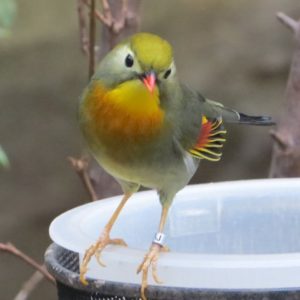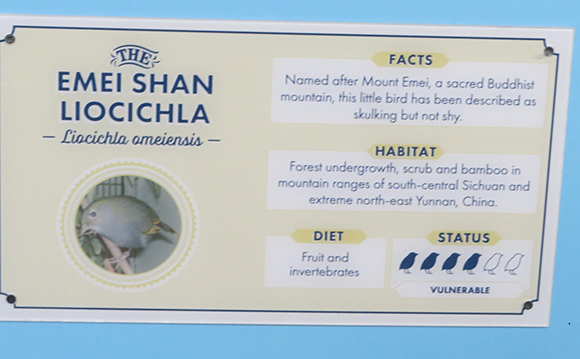Last fall, I had an opportunity to briefly visit London Zoo, which first opened in 1828 for the purpose of housing wild animals being brought to England from what was then mysterious, distant, and exotic environments, so that they could be studied scientifically. Not only has a lot changed in the intervening 190 years, but there have been significant developments in the last twenty odd years since I previously visited London Zoo. Back then, I thought the famous Snowden Aviary, built in 1963 and the first “walk through” aviary in any zoo, provided the kind of space that larger birds should have, if they are to be confined at all. Being passionate about birds, I wanted to see it again.
It was closed for repairs.
Okay. That forced me to focus on the rest of the zoo, although with limited hours of daylight so late in the year, I decided to mostly prioritize the birds.
The zoo community claims to uphold three principles that I endorse. One is to contribute to the conservation of species. Another is to educate the visiting (and other) public. The third is to provide humane care for animals.
However, the primary function of all zoos I’ve ever visited has been to entertain families. But, that does not necessarily preclude fulfilling one or more of the other functions.

At worst, well, animals were just stuck in cages. Why put a brilliant red, very restless Brazilian tanager in the same, square, unadorned cage with an Emei Shan liocichla, a tiny grey songbird found only in the mountains of southern Sichuan, China? All that is said about the liocichla is where it is found, that it eats “fruit and invertebrates,” is skulking but not shy, and is classified as “vulnerable.”

Some good signs and information were available but the visitors I saw did what visitors do in zoos – they largely ignored the signs. That information is readily available if you want it, without need to cage anything. I saw some birds – blue-crowned laughing-thrushes – that I’ve never seen in a zoo and which seemed to have adequate housing.
There was a “show” going on at the penguin exhibit, an emcee shouting the same sort of platitudinous stuff I’ve heard so often, but with an English accent. A new penguin facility being built is just another big, concrete swimming pool, like any penguin exhibit. The last bird I photographed was a sleepy burrowing owl, looking so different from the ones I’ve seen out on the prairies of my own continent (such as the one pictured above), living under big skies, where they belong.
Keep Wildlife in the Wild,
Barry
